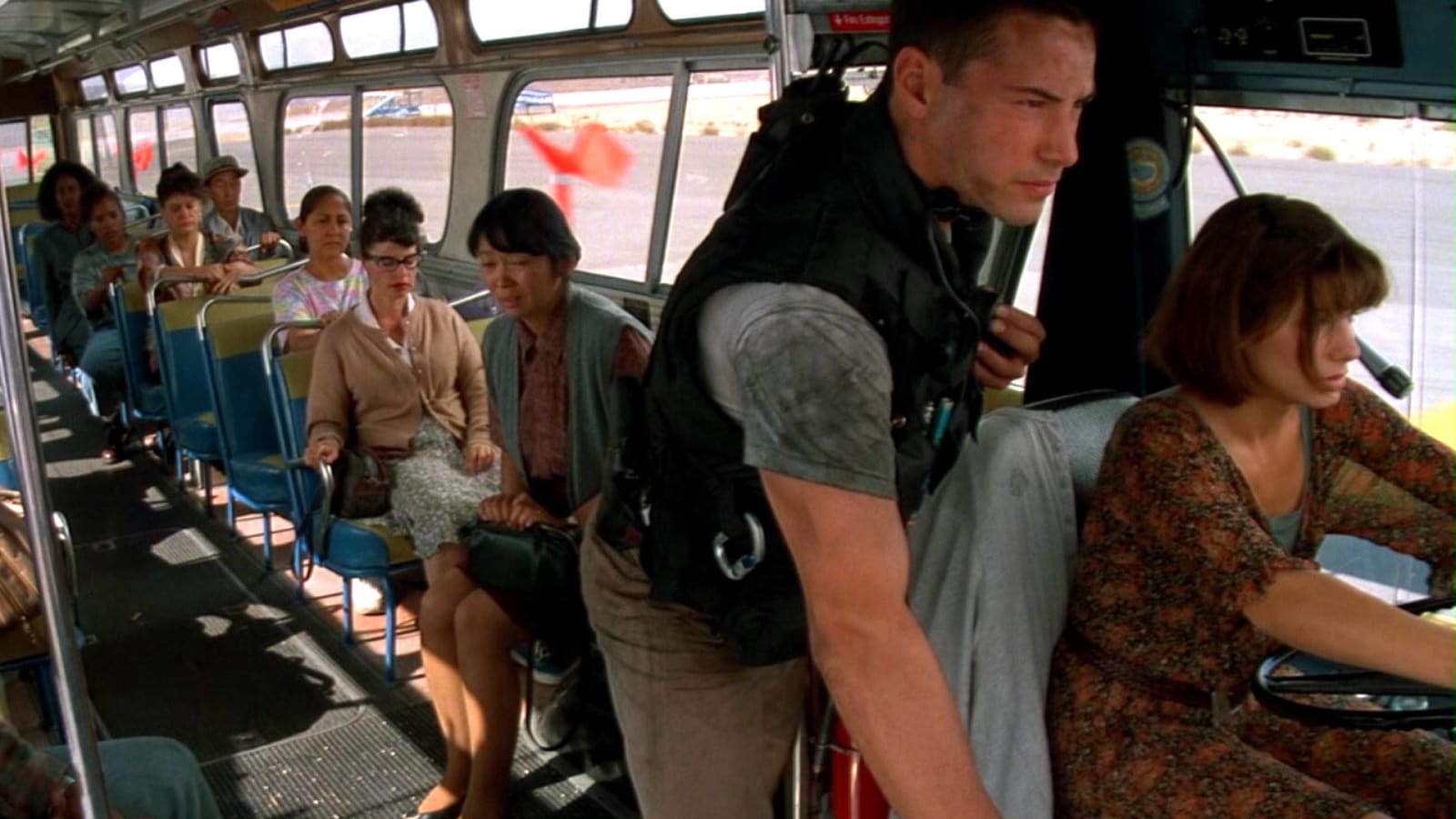
25 years ago, "Speed" marked the end of the practical action era
For action movie aficionados, only one film mattered heading into the summer of 1994: James Cameron’s "True Lies." This was the master commercial craftsman’s madly ambitious riposte to Steven Spielberg’s "Jurassic Park," which, with its photoreal dinosaurs, had made the groundbreaking computer-generated “morphing” f/x of 1991’s “Terminator 2: Judgment Day” look like a child’s magic act.
Twentieth Century Fox had over $100 million riding on Cameron’s blockbuster gamble, and while he’d failed the studio with 1989’s "The Abyss," this time he’d brought along Arnold Schwarzenegger as movie star insurance. This was the main event; everything else on the schedule prior to July 15 was the undercard.
Unless you were a Hollywood insider or an avid reader of the Usenet newsgroups (aka the internet) 25 years ago, you likely had no idea that Fox was far more enthused over an unimaginatively titled movie called "Speed." Due out June 10, it had been generating industry buzz for months due to its test screening scores and confident marketing. Many scoffed that a film with such a ludicrous premise — a mad bomber remotely hijacks a Los Angeles commuter bus and threatens to blow it to smithereens if it drops below 50 miles per hour — could catch on with more than hardcore action junkies (particularly with its B-level cast of Keanu Reeves, Jeff Daniels, Dennis Hopper and a barely on-the-radar ingénue named Sandra Bullock). But the studio couldn’t wait to screen it for critics. It knew.
Directed by Jan de Bont, a veteran cinematographer who’d shot action classics like “Die Hard” and "The Hunt for Red October," "Speed" largely eschewed the computer-generated trickery audiences thought they wanted in 1994 in favor of gasp-inducing practical stunts and fireball-spouting pyrotechnics. The director and his expert collaborators (including photography director Andrzej Bartkowiak, second unit director Alexander Witt and stunt coordinator Gary Hymes) built an 80-foot-tall set for the opening elevator rescue, shot the bulk of the bus action on city streets and the not-yet-opened Judge Harry Pregerson Interchange and launched a rogue subway car onto Hollywood Boulevard. And unlike a flashy Dar Robinson stunt in a Burt Reynolds movie, de Bont didn’t wall these moments off from the rest of the movie. You won’t notice until a repeat viewing (if you notice at all) that that’s Keanu Reeves leaping from Glenn Plummer’s Jaguar to the entrance of the bus as it’s moving at a not-inconsiderable rate. (Watch his shoes get dragged back on the pavement.)
"Speed" feels dangerous — but not Jackie-Chan-plummeting-six-stories-from-a-clock-tower-onto-uncushioned-earth dangerous. For an American action movie, though, it’s as close to the edge as it gets as de Bont has his cameras in tight with the actors and the vehicles (with the actors often in the vehicles and not on some hermetically sealed green-screen-laden soundstage), thereby thrusting the performers into the moment.
Actors are often praised for their ability to sell a CG illusion (“You’d never guess he/she’s talking to a tennis ball on a stick!”), but it’s far more exciting to watch them contend with the elements. Some moments feel planned, and others feel like miracles of coverage; de Bont’s decade-plus partnership with Paul Verhoeven clearly influenced his aesthetic. (The steadicam operator gets an Olympic workout on this movie.). But save for a few bravura shots (e.g. the flames reflected off the face of the pay phone), he’s basically in run-and-gun mode. Logistically, de Bont’s got this production on lockdown, but he allows chaos to occur within this controlled space. “Speed” is essentially the best film Tony Scott never made.
As for the writing, everyone should know that Graham Yost owns the sole credit on “Speed” because it’s his concept and, roughly, his story. But the script’s uncredited secret sauce is Joss Whedon. By Yost’s admission, "98.9-percent of the dialogue" was written by Whedon, who was still a few years away from bringing "Buffy, the Vampire Slayer" to television. Whedon’s other major contribution to the script was making Hopper’s character the villain instead of Daniels’ bomb expert — thus giving Reeves’ Jack Traven a more fervent emotional investment heading into Act 3 (and Daniels his most offhandedly brilliant moment as an actor when he realizes he’s walked into Hopper’s booby-trapped house).
"Speed" may be a near-perfect action movie, but like so many near-perfect films, a great deal had to fall into place to keep it from being a disaster — and most of these happy accidents happened during the scripting phase.
Also, it was the surprise hit of summer 1994, grossing $121 million. Meanwhile, the impressive "True Lies" arrived a month later and while impressive on multiple levels, it hit a sour note with many viewers due to its perceived misogyny (particularly in its treatment of Jamie Lee Curtis’ character).
As the years wore on, big-budget action films leaned more heavily and inelegantly on CG f/x to capture feats of derring-do that humans simply couldn’t accomplish. Twenty-one years after “Speed”, audiences clapped like trained seals as a digitally created car conveyed the flesh of Vin Diesel and Paul Walker through two Abu Dhabi skyscrapers. The studio had all the time and money in the world to produce this illusion. It meant nothing. It was nothing.
"Speed" was something. It was the end of an era in which the physical limitations of stunts and optical effects fired the imagination. Now everything is possible, and wonder is dead.
More must-reads:
Trending in Entertainment
Customize Your Newsletter
 +
+
Get the latest news and rumors, customized to your favorite sports and teams. Emailed daily. Always free!

